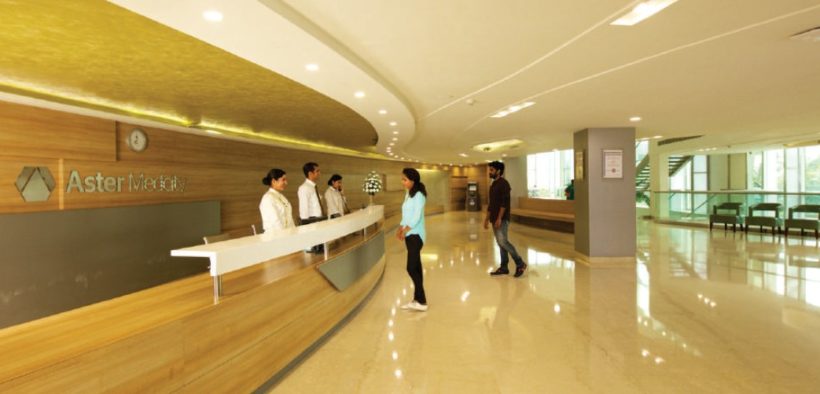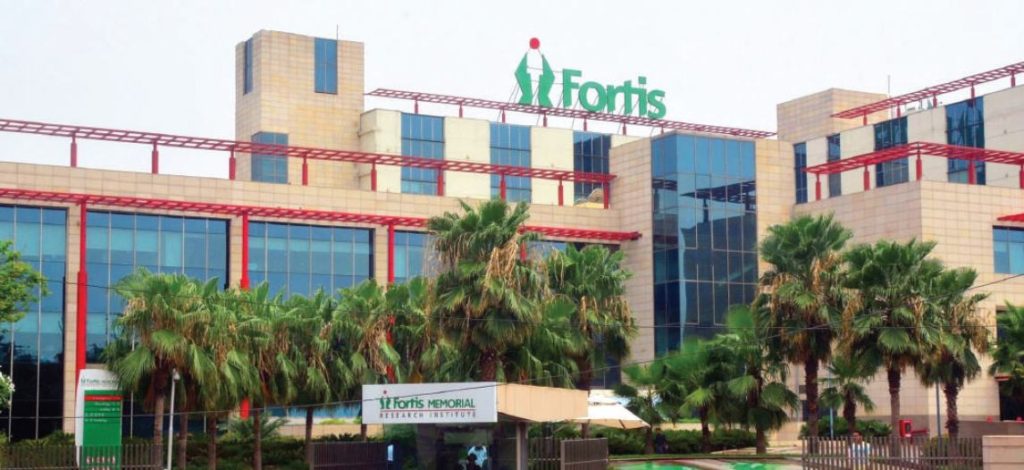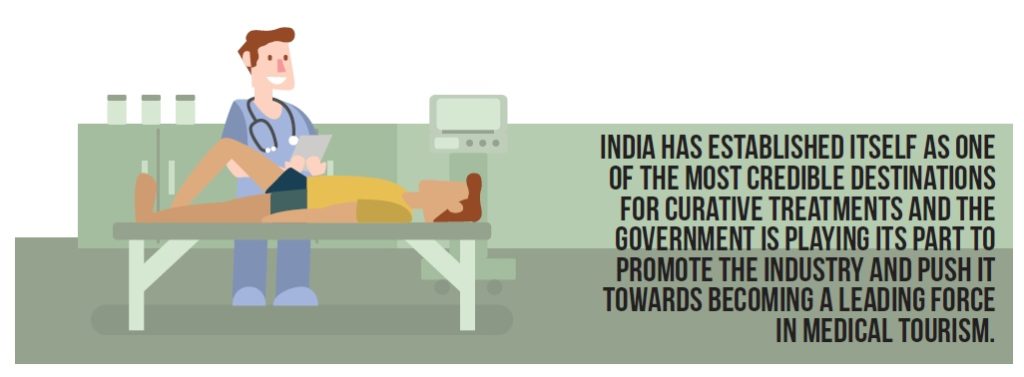Welcoming Newer Possibilities

“With the boom in medical tourism, India is offering global medical tourists the best of its services and exploring newer spheres in the sector.
“BY Lidiya Prasad”
Picture this: A majestic, elevated temple with flowing pools and soothing, aromatic baths in hot springs around. Men and women alike traveling on camelback to take a dip in these springs in hopes of being cured of their ailments. Nothing like the thought of it, right?
Even before the era of taking the next flight abroad for tummy tucks and plastic surgeries, the seeds of medical tourism were sown in the land of the Sumerians 6,000 years ago. The Egyptians, with their thorough medicinal practices, attracted travelers from all over the world to seek treatment at their healing centers. Delving deep into the history of medical travel, one can also see how India’s rich tradition of alternative treatments like yoga and Ayurveda have appealed to health tourists for over 5,000 years.
Considered one of the top ten medical tourism destinations in the world, India has set itself apart as one of the elemental players in the industry. With its improved innovation and technology in the field of healthcare, research, and development, India has helped its patients save 65% to 90% of their treatment costs compared to similar services provided in the west. And unlike the common belief that lower cost equates to poorer quality, the country’s tourism history has proved otherwise. To the visitor’s eye, India’s natural and cultural landscape exudes a certain charm, serenity, and beauty. They are offered services that thoughtfully blend quality healthcare, luxury, and leisure.
Most hospitals in India are accredited by National Accreditation Board for Hospitals and Healthcare Providers (NABH) and Joint Commission International (JCI), a testament to their global standing and recognition. In a rising trend, hospitals these days also provide comprehensive healthcare packages that include conveyance, free internet connectivity, comfortable stay, and private chefs on request. By assuring utmost comfort and convenience to its patients, India’s medical travel providers are attracting a bigger crowd from across the globe.
Rising Statistics
As per the country’s home ministry’s reports, over two lakh foreign patients availed medical assistance in India in 2016, clearly indicating the country’s rise as one of the most preferred medical tourism destinations in the world. Post-liberalisation of the visa policy in 2014, the country has seen an influx of tourists coming in for business, leisure, and rehabilitation. The statistic revealed that 2,01,099 visas were issued to travelers from across 54 countries. Of the lot, the study further showed that the highest number of patients were from Bangladesh, followed by Afghanistan, and Iraq.
“For the longest time I had been on the lookout for certified hospitals that could address my spine issue, Thanks to India’s organized medical assistance, the service facilitator approached my need from a medical perspective and offered exactly what I was looking for. Their in-house panel of doctors helped me choose the right hospital, and delivered prompt service. I have saved a lot of time and I could not be happier,” says Muhammad Humayun Kabir from Bangladesh, who was in Kolkata for spine surgery.
Another study carried out by the business chamber revealed how cost-efficient treatments provided by certified hospitals in the country were the primary drivers behind this boom. In fact, the world-class facilities extended by hospitals in India are at par with those provided by medical institutions in developed countries. Other factors like skilled and experienced medical professionals, easy access to consultants, and affordable travel and logistics have also immensely added to this rising trend. India has established itself as one of the most credible destinations for curative treatments and the government is playing its part to promote the industry and push it towards becoming a leading force in medical tourism.

India has established itself as one of the most credible destinations for curative treatments and the Government is playing its part to promote the industry and push it towards becoming a leading force in medical tourism.
Top Players
Patients Beyond Borders, one of the most trusted resource guides for medical tourists and operators, recently conducted a survey that revealed countries that were most widely preferred by tourists for its cost-efficient treatment options and quality and specialized medical assistance. While Malaysia topped the list with over half a million tourists flocking to the country seeking medical aid, India, Turkey, and Brazil stood closely behind. Some of the most preferred medical tourism spots in India are Bangalore, Chennai, Kolkata, New Delhi, Mumbai, and Hyderabad.
A recent report as per Deloitte’s forecast has projected a two-fold growth of the medical tourism industry in India in the coming year, with most of its patients coming from the neighboring states of Bangladesh, Pakistan, Myanmar and Sri Lanka, and a few from African, Middle Eastern and American countries. While most patients prefer services from hospitals like Apollo, Fortis, and Manipal, several other private medical institutes are also joining the bandwagon, extending its services to those seeking better treatment options in the country.
The competitive prices at which treatments are offered by Indian hospitals continue to attract patients from across the globe. Vaidam, one of the leading medical travel assistants in India, has created a platform where patients can get in touch with over 850 surgeons and specialists from across 70 hospitals spread across the country. Treat go, a startup from Bangalore is making headlines for its unique approach where patients can avail free consultation from doctors regarding treatment options and further proceedings.

“When technology dons the hat of a hospital staff, helping patients access facilities without any hiccups, it becomes the ideal kind of innovation that can alleviate barriers in healthcare, and this is the sole vision we are founded on today,” says Binil Antony, Chief Operating Officer of the company, about how TreatGo is striving towards a healthy, happy future for everyone.
Some of the other major companies bringing about a significant wave of change in the Indian medical tourism industry are MediConnect, MediAssist, and IndiCure.
Mending the gap
While a minimally invasive surgery could cost patients something around $5000 when treated in India, the same costs almost twenty times more in the US. This alarming disparity has pushed foreign patients to increasingly seek treatment in developing countries, without having to spare with the quality. Similarly, cardiac surgery, which can cost about $3500 to $8700 in India, is priced at an exorbitant $70,000 to $200,000 in the west. Bariatric surgeries are being carried out on a rising scale in India, statistics showing over 100 surgeries carried out in a day, with Mumbai being the most preferred destination for the same. India, thus, provides patients the best of all treatments at a negligible cost. And the fact that through online bookings, one saves on the otherwise long waiting period, is even more comforting.
“When I was told that fixing and cleaning my tooth would cost a mind-boggling $5,000, I decided to fly down to India with my wife, travel around the country and get the fixing done at a clinic in Kerala. I’d rather spend less and enjoy the experience, than shell out thousands of dollars and feel the burn,” says Abraham Chacko from Dallas, who is thankful for the endless treatment possibilities in this present day and time. India has been the preferred hotspot for medical treatments like knee and hip replacement, IVF, neurosurgery, cosmetic surgery, liver transplant, cardiovascular surgery, bariatric surgery, and oncological surgeries. Apart from these curative treatments, most travel operators also provide packages that include rejuvenation and relaxation therapies like massages, spas, Unani and naturopathy. To attract more patients, additional benefits like preventive health checkups, accommodation for caretakers and the like are also being widely provided by agencies.
“THROUGH ADEQUATE FOCUS AND EFFECTIVE EXECUTION, INDIAN MEDICAL TRAVEL, PEGGED AT $3 BILLION IN 2015, CAN BE A $9 BILLION OPPORTUNITY BY 2020.
”K J Alphons, Union Tourism Minister
The stumbling blocks
While the country’s medical tourism sector is seeing an unprecedented rise in its growth, on one hand, a bevy of challenges seems to be weighing it down at the same time. “Patients often consider three or more hospitals before they decide to zero in on one and they usually decide to go for the one that offers the closest connectivity. Among the most common challenges, we have faced in our transactions with international patients are these external factors like rising competition and logistical concerns,” says Somashekhar, who is the Senior Manager of International Marketing at the Fortis International Hospital, Bengaluru.
And it does not end there. Other barriers influencing the flow of patients to the country are medium of communication, less number of hospitals with world-class accreditations and infrastructure, visa restrictions, global security issues, oil slump, weak medical negligence laws and difficulty in patient follow-up. However, despite these limitations, India has proved its potential to cash in on opportunities in the global medical tourism market, overcoming its barriers one step at a time. “There has been a distinctive rise in the number of people coming to Kerala for treatment,” says Vinod YR, Chief Business Development Officer at Aster Medcity in Kerala’s coastal city of Kochi. The hospital sees over 10,000 medical value travelers a year, mostly from the Middle East, in departments varying from neurosurgery to oncology and cardiology.

Policy Formulations
Good times are about to roll and India’s medical travel sector can hail praises for the government for its several policies aimed at promoting this lucrative industry’s growth. In a recent move, the ministries of Health, External Affairs, Tourism and Culture requirements of foreign patients, starting from visa applications to the extension of stay in the country. The scope of e-tourist visas has been expanded to include short-term medical treatments and plans are currently underway to set up separate immigration and facilitation counters to make proceedings easier for foreign patients.
The Ministry of Tourism and Health, in association with the Union Ministry of Commerce, has also initiated a website, indiahealthcaretourism.com, that provides comprehensive information regarding hospital listings and treatment specialization. As per the Indian Medical Association (IMA), several other measures are also being discussed for the implementation of the hassle-free patient experience. Union Tourism Minister K J Alphons recently addressed the pressing need to acknowledge the rise in India’s medical travel sector at the Lok Sabha. “Through adequate focus and effective execution, Indian medical travel, pegged at $3 billion in 2015, can be a $9 billion opportunity by 2020”, he said.
A bigger, better future
As healthcare bills continue to be on a steady rise in developed countries, India is at the threshold of a threefold increase in its medical tourism market. The future looks quite promising, with hopes of the industry reaching a targeted $9 billion in the next two years. With a keen eye on the world’s healthcare needs, gaining qualitative and quantitative advancements over its competitors cannot be difficult for India. Medical tourism has opened its channel of possibilities in the country and that has been due to its efficient and specialized healthcare professionals and cutting edge innovation. With support from the government, India can take medical tourism to newer heights. In Kerala alone, medical tourism is set to go up by 30-40 percent, says Vinod. “Hospitals focused on medical tourism will see at least 15-20 percent of their revenue coming in from medical value tourism,” he says. Medical tourism is not just about patients traveling between countries for medical assistance. It is also about gaining their trust, extending the best possible treatments, and letting them know that we care.

















